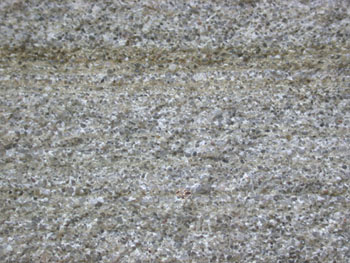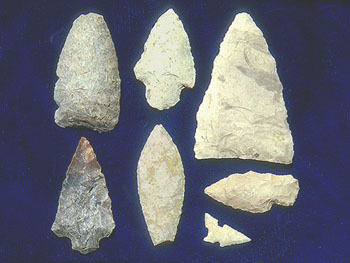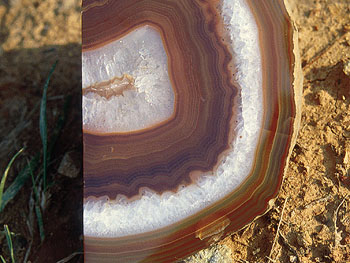| Quartz commonly shows up in sedimentary rocks as rounded pebbles or as angular to rounded sand grains. Quartz grains freshly released from a weathered rock can be quite angular, but river transport followed by repeated pounding by ocean waves or eolian transport can make the grains remarkably spherical.
Chert and flint are microcrystalline varieties of quartz. Their quartz crystals are so tiny that chert and flint fracture more like glass than quartz crystals. A skilled person can chip chert and flint pieces into arrow heads, spear points, and other tools. The only difference between chert and flint is color: flint is black or nearly black and chert tends to be white, gray, or pink and can be either plain, banded, or preserve fossil traces.
|



